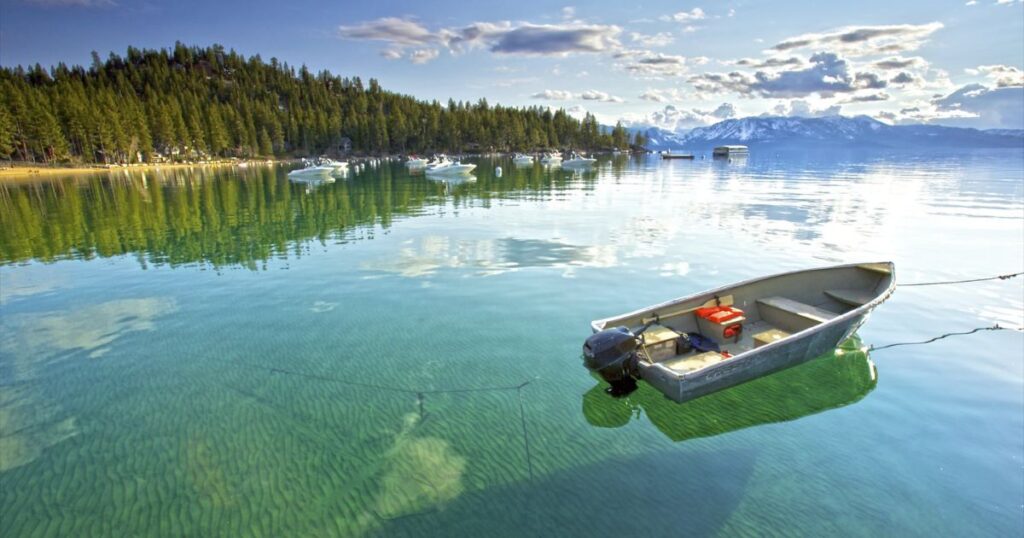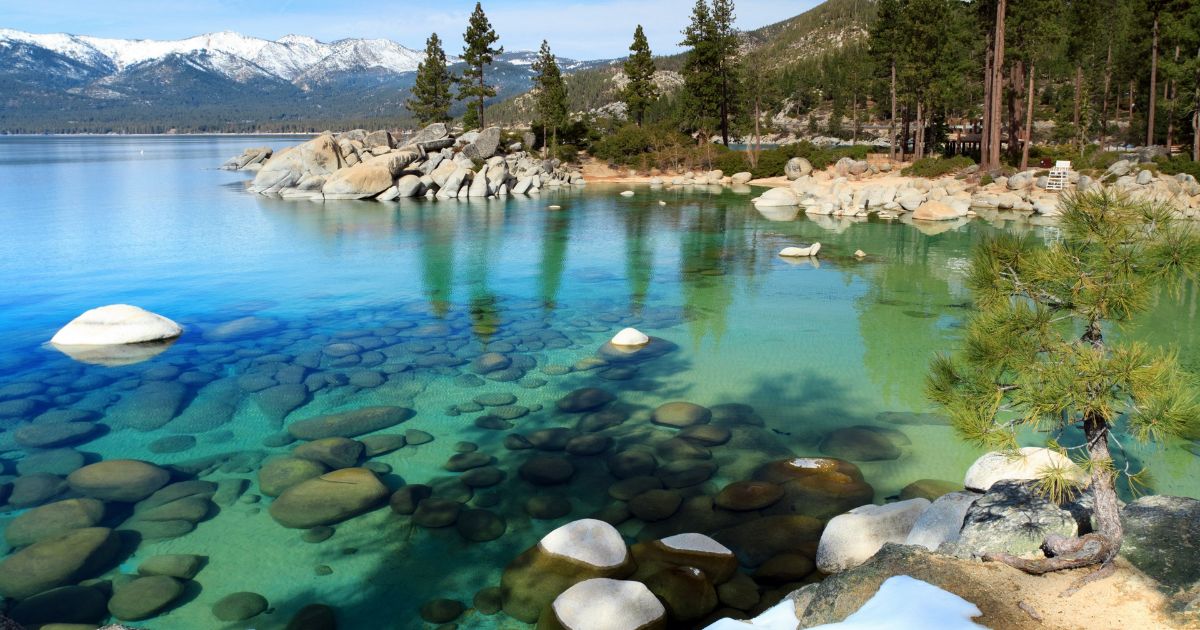In the heart of the Sierra Nevada mountains, a natural wonder awaits – Lake Tahoe, where the water’s exceptional clarity defies belief.
As you approach its shores, the mesmerising shades of emerald and turquoise beckon you to dive into its pristine depths, leaving you awestruck by the enigmatic beauty that lies beneath the surface.
This blog post unravels the secrets behind Lake Tahoe’s extraordinary water clarity, a phenomenon that has captivated visitors and locals alike for generations.
From its alpine majesty and unique geographical features to the dedicated efforts of environmental preservation, we’ll explore the harmonious interplay of factors that have preserved this natural treasure.
Alpine Majesty and Geographic Features
Lake Tahoe’s water is exceptionally clear due to several factors. The absence of major urban areas along its shores limits pollution and human activity.
The lake’s geological features, including its granite basin, act as a natural filter, keeping sediments and contaminants at bay.
The lake’s breathtaking surroundings not only provide a stunning backdrop but also contribute to its remarkable clarity.
The absence of large-scale development and industry in the immediate vicinity means there is minimal pollution and contaminant runoff, allowing the lake’s waters to remain exceptionally pure and clean.
Why is lake clarity important?

Lake clarity is crucial for several reasons. First, it contributes to the stunning beauty of Lake Tahoe, drawing visitors from far and wide to experience its breathtaking vistas.
But beyond aesthetics, water clarity also affects drinking water quality. It serves as an important indicator of a lake’s overall health, reflecting the impact of various factors like runoff from the surrounding watershed and airborne pollutants.
By monitoring this single measurement, we can track the daily and seasonal changes that lakes undergo, allowing us to assess and address any potential threats to their well-being.
Read More
The Natural Haven of Valens Lake: A Camper’s Delight
Exceptional Water Purity
One of the most striking aspects of Lake Tahoe is its outstanding water clarity, which allows visibility to depths averaging 70 feet or more.
In some areas, the visibility can reach an astounding 100 feet, offering a mesmerising glimpse into the lake’s crystal-clear depths.
This exceptional purity is largely attributed to the lake’s geological history and formation. Lake Tahoe’s basin is composed of granite, a natural filter that effectively prevents sediments and contaminants from entering the water.
This unique feature acts as a barrier, ensuring that the water remains remarkably clear and free from pollutants.
Fun Fact: Lake Tahoe’s clarity is often compared to that of distilled water, with visibility ranging from 60 to 100 feet, making it one of the clearest lakes in the world.
Dissolved Minerals and Reflective Properties
As if the lake’s clarity wasn’t captivating enough, Lake Tahoe’s waters are further enhanced by the presence of dissolved minerals, particularly calcium carbonate.
These minerals, carried by freshwater streams flowing into the lake, contribute to the stunning bluish hue and reflective properties that make the lake’s waters truly mesmerizing.
When sunlight strikes the lake’s surface, it reflects off these dissolved particles, creating a breathtaking display of shimmering turquoise and emerald hues.
This natural phenomenon not only adds to the lake’s visual appeal but also plays a vital role in maintaining its clarity by preventing excessive algae growth.
Nutrient-Limited Environment

Lake Tahoe is classified as an oligotrophic lake, meaning it has low levels of nutrients essential for plant and algae growth. This nutrient-limited environment is a key factor in preserving the lake’s remarkable water clarity.
With limited availability of nutrients like nitrogen and phosphorus, the occurrence of algal blooms is significantly reduced. Algal blooms can cloud water bodies and deplete oxygen levels, but Lake Tahoe’s low nutrient levels prevent such issues, maintaining its exceptional clarity and healthy ecosystem.
Did You Know? Lake Tahoe’s low nutrient levels are a result of its unique geological and hydrological characteristics, including its granite basin, limited inflows, and lack of agricultural runoff.
Environmental Preservation and Stewardship
While nature has played a significant role in shaping Lake Tahoe’s clarity, human efforts have been equally crucial in preserving this natural wonder.
Various organizations, government agencies, and the local community have implemented strict regulations and measures to protect the lake’s water quality.
These efforts include:
- Pollution Control: Stringent guidelines and enforcement to prevent the discharge of pollutants into the lake and its surrounding areas.
- Runoff Management: Implementation of stormwater management systems to control and treat runoff before it enters the lake.
- Erosion Control: Measures to prevent soil erosion and sedimentation, which can compromise water clarity.
The dedicated work of environmental stewards, coupled with public awareness and responsible tourism practices, has played a vital role in safeguarding Lake Tahoe’s exceptional clarity for future generations to enjoy.
As you stand at the shoreline, mesmerized by the lake’s crystal-clear waters, remember that this natural wonder is a testament to the harmonious interplay of nature’s perfection and human commitment to preservation.
Lake Tahoe’s clarity is a treasure that must be cherished and protected, ensuring that its mesmerizing beauty continues to captivate visitors for years to come.











